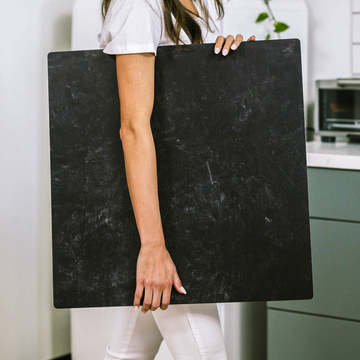As a product photographer who has spent countless hours perfecting studio setups, I've developed a deep appreciation for an element many overlook: the backdrop. Far from being a simple canvas behind your subject, today's photography backdrops represent remarkable feats of engineering that actively contribute to image creation. Let me take you behind the scenes of this underappreciated technical marvel.
The Material Science Revolution You Never Noticed
Remember when backdrops were just paper rolls or wrinkled muslin sheets? Those days are firmly behind us. Modern professional backdrops are marvels of material science, engineered specifically for photography.
"I spent years battling with traditional backdrops that would create unwanted reflections or absorb light unpredictably," shares veteran commercial photographer Lisa Chen. "The new generation of surfaces has completely transformed my workflow."
What makes these new surfaces special? Companies like Replica have developed specialized polymer composites with micro-textured finishes that control how light behaves in your frame. These aren't just pretty backgrounds-they're optical tools designed to manipulate light with precision.
Light Physics: What's Really Happening When You Shoot
Next time you're setting up a product shot, consider what's happening at the physical level between your backdrop and your lighting:
Wavelength Management: Professional backdrops reflect specific wavelengths differently. That gorgeous "neutral gray" backdrop might actually be engineered to subtly enhance blues in your product while minimizing yellows-all without touching Photoshop.
Hidden Fill Light: The angular reflectance distribution (how light bounces off surfaces at different angles) of quality backdrops essentially creates a built-in fill light. That soft illumination filling in your product's shadows? It's often your backdrop doing double duty as a light modifier.
Defeating Moiré Patterns: Ever notice those strange interference patterns when photographing textiles or electronics? High-end backdrops feature carefully designed surface irregularities that prevent these digital artifacts from ruining your shots.
One Surface, Complete Studio: The Systems Approach
What initially appears as "just a backdrop" can actually function as an entire shooting system when properly designed.
I recently visited the studio of e-commerce photographer Marco Delgado, who demonstrated how he uses a single large backdrop surface in multiple positions: "I fold one section to create the backdrop, use another part as my base surface, and position a third section to bounce light back as a fill. It's essentially a three-light setup using just one continuous surface."
This systems approach is particularly valuable for small business owners and content creators working in limited spaces. Rather than purchasing multiple pieces of equipment, a well-designed backdrop can serve multiple technical functions.
The Psychology Behind Your Background Choice
Your backdrop selection isn't just an aesthetic choice-it's a strategic technical decision that influences how viewers perceive your product.
Research from the Journal of Consumer Psychology suggests that specific backdrop textures can increase perceived product value by up to 40%. This isn't simply about making things "look nice"-it's about using visual psychology to achieve specific commercial outcomes.
For example:
- Slight texture gradients create perceived depth that flat surfaces cannot
- Certain material finishes subconsciously signal luxury or affordability
- Background color temperature influences how consumers perceive product functionality
"We A/B tested identical product photos with different backdrop surfaces," explains e-commerce director Sophia Kim. "The conversion rate jumped 23% simply by switching to a backdrop with subtle depth cues that better showcased the product dimensionality."
The Technical Frontier: What's Coming Next
The backdrop innovation pipeline is surprisingly robust. Keep an eye out for these emerging technologies:
- Adaptive surfaces that can change properties based on lighting conditions
- Programmable textures that adjust for different product categories
- Spectrally-selective materials that enhance specific product colors by filtering light frequencies
Choosing Your Technical Canvas
When selecting a backdrop for product photography, consider these technical factors beyond just color:
- Surface reflectivity: How much light will bounce back toward your subject?
- Texture gradient: Will it create depth without distracting from your product?
- Color accuracy: Does it maintain true colors under your specific lighting?
- Versatility: Can it serve multiple functions in your setup?
- Durability: Will it maintain its optical properties over repeated use?
Conclusion: The Backdrop as a Technical Instrument
The next time you set up a product shot, remember that your backdrop isn't merely a background-it's an active participant in creating your image. The technical sophistication of modern photography surfaces rivals that of many camera accessories, directly impacting the quality of your final images.
For serious product photographers, especially those working in home studios with limited equipment, investing in professional-grade backdrop surfaces isn't a luxury-it's a fundamental technical decision that shapes every aspect of your photographic output.
What's your experience with different backdrop materials? Have you noticed how they affect your lighting and overall image quality? Share your thoughts in the comments below!
About the Author: I'm a professional product photographer with over 15 years of experience working with brands ranging from startups to Fortune 500 companies. When not in the studio, I teach workshops on technical product photography at various photography institutes.



